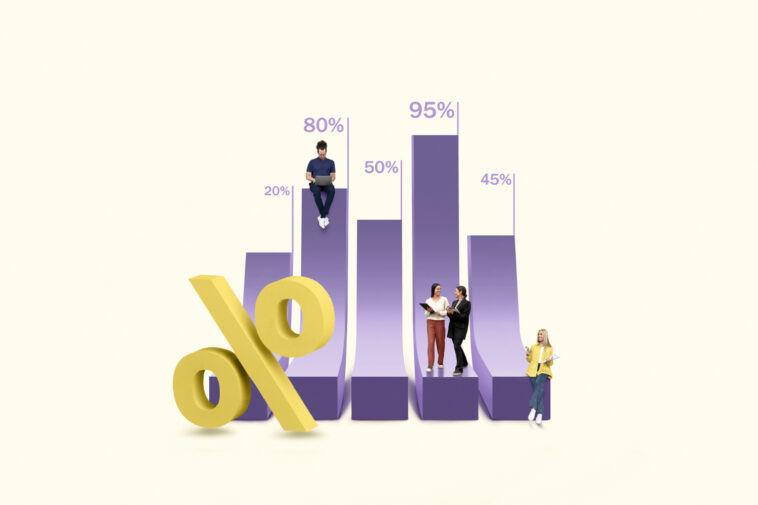In the grand chessboard of homeownership, refinancing a mortgage is a strategic move many contemplate for various reasons – from lowering interest rates to restructuring financial plans. However, navigating the refinance rates for mortgages can often feel like solving a complex riddle. This extensive guide aims to demystify refinance rates, helping homeowners understand and capitalize on the opportunities present in the ever-fluctuating world of mortgage refinancing.
Understanding Refinance Rates: The Starting Point
Refinance rates are the interest rates applied when a homeowner decides to refinance their mortgage. Refinancing involves replacing your existing mortgage with a new one, ideally with terms more favorable to your current financial situation. These rates are influenced by various factors, including market conditions, the Federal Reserve’s policies, and your personal financial standing. Understanding these rates is crucial in determining if refinancing is a financially viable option for you.
The Whys and Whens of Refinancing
Homeowners opt to refinance for numerous reasons. The most common is to take advantage of lower interest rates, which can significantly reduce monthly payments and overall interest paid over the life of the loan. Others refinance to switch from an adjustable-rate mortgage to a fixed-rate mortgage, shorten the term of their loan, or tap into home equity for large expenses. Deciding when to refinance, however, hinges on market trends, your financial health, and long-term goals.
Market Trends and Economic Factors
The refinance market is in constant flux, influenced by broader economic trends. Factors such as inflation, economic growth, and the Federal Reserve’s monetary policy play significant roles in shaping refinance rates. Keeping a pulse on these indicators can help you anticipate rate movements and time your refinancing for optimal benefits.
Assessing Your Financial Health
Your personal financial situation is a crucial determinant in securing favorable refinance rates. Lenders will scrutinize your credit score, debt-to-income ratio, employment history, and current home equity. A strong financial profile can position you for lower rates and better loan terms. Thus, before embarking on the refinancing journey, it’s vital to assess and, if necessary, improve your financial standing.
Types of Refinance Loans
Refinancing offers various loan options, each with its nuances. Rate-and-term refinances allow you to adjust the interest rate or loan term (or both). Cash-out refinances enable homeowners to borrow against their home equity. Streamline refinancing offers a faster and less rigorous process for those with government-backed loans. Understanding these types can guide you to the choice best aligned with your objectives.
Fixed vs. Adjustable: Choosing Your Rate Type
Deciding between a fixed-rate and adjustable-rate mortgage is a key consideration in refinancing. Fixed-rate mortgages offer stability, with consistent interest rates and payments throughout the loan term. Adjustable-rate mortgages may start with lower rates but are subject to change, potentially leading to higher future payments. Your choice should reflect your risk tolerance and financial forecast.
The Cost of Refinancing: Fees and Break-Even Analysis
Refinancing isn’t free. It involves various fees such as application fees, appraisal fees, and closing costs. Conducting a break-even analysis – where you calculate how long it will take for your monthly savings to surpass the refinancing costs – is critical in deciding whether refinancing is a cost-effective decision.
Choosing a Lender: A Crucial Decision
Selecting the right lender can influence the success of your refinancing. Different lenders offer varying rates and fees, along with different levels of customer service. Research, compare offers, and read reviews to choose a lender that not only offers competitive rates but also aligns with your needs and preferences.
Navigating the Refinancing Process
The process of refinancing typically involves applying with a lender, undergoing a financial check, getting your home appraised, and closing on the new loan. Each step requires careful consideration and thorough preparation, from gathering financial documents to understanding the terms of your new mortgage.
Long-Term Perspective: Refinancing as a Strategic Financial Move
Refinancing should be viewed as a strategic financial move rather than a mere reaction to fluctuating rates. It should align with your long-term financial goals, whether that’s reducing overall interest, paying off your mortgage faster, or leveraging your home equity to consolidate debt. It’s a decision that can have lasting impacts on your financial journey.
Conclusion: Solving the Refinance Riddle
In conclusion, solving the riddle of refinance rates requires a blend of market awareness, personal financial assessment, and strategic foresight. By understanding the nuances of refinancing, assessing personal eligibility, and aligning the decision with broader financial goals, homeowners can successfully navigate the complexities of mortgage refinancing. Remember, refinancing is more than a transaction; it’s a strategic pivot in your financial narrative that, when executed wisely, can lead to significant long-term benefits.
As you contemplate refinancing, take a holistic view of your financial landscape, seek advice from financial experts, and approach the decision with a blend of prudence and optimism. With the right strategy and timing, refinancing can unlock doors to financial flexibility and security, marking a wise chapter in your homeownership journey.

